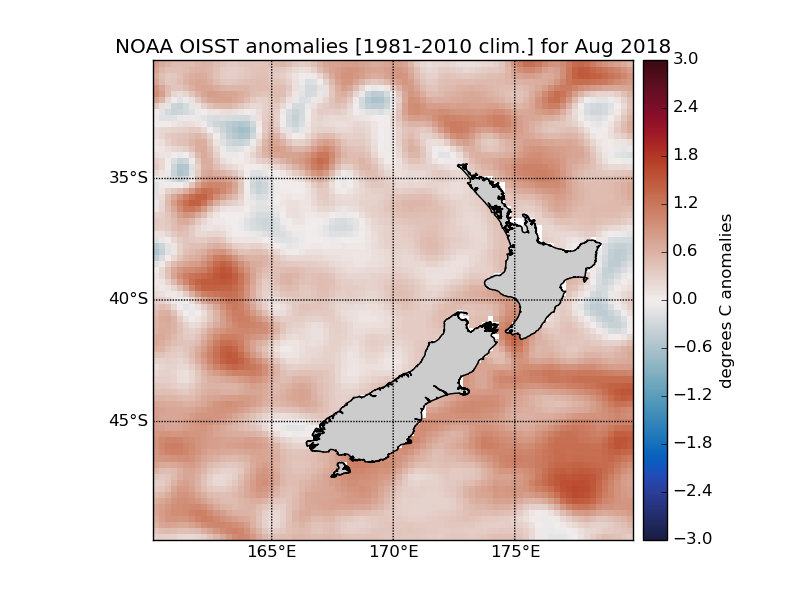For the fifth consecutive month, ENSO-neutral conditions persisted across the tropical Pacific. During August 2018, the Southern Oscillation Index (SOI) trended negative and had a preliminary value of -0.9 (on the El Niño side). Sea surface temperatures (SSTs) in the west-central equatorial Pacific warmed once again and the NINO4 Index had a preliminary anomaly of +0.61°C (on the El Niño side of neutral).
The consensus from international models is for the tropical Pacific to transition toward El Niño over the next three-month period (65% chance over September – November 2018). The probability for El Niño conditions being established increases as we reach into and beyond the Southern Hemisphere summer, with a 78% chance for El Niño conditions over the March – May 2019 period. Indications are that the event – if it eventuates – will not be in the strong category. The type appears to lean toward the central Pacific event, although dynamical models indicate that warm SST anomalies may gradually transit eastward later in 2018 into early 2019.
In other words, the upcoming El Niño event, should it come to fruition, is not expected to be of a similar intensity to what was experienced during 2015-16, 1997-98, or 1982-83 and therefore different impacts are expected.
Sea Surface Temperatures
According to the dynamical models’ forecasts, near or above average SSTs are expected in New Zealand coastal waters during the next three months, while the large area of positive SST anomalies offshore east and south of the country is forecast to persist. It is noted that dynamical models did not capture the warming that took place during August.

